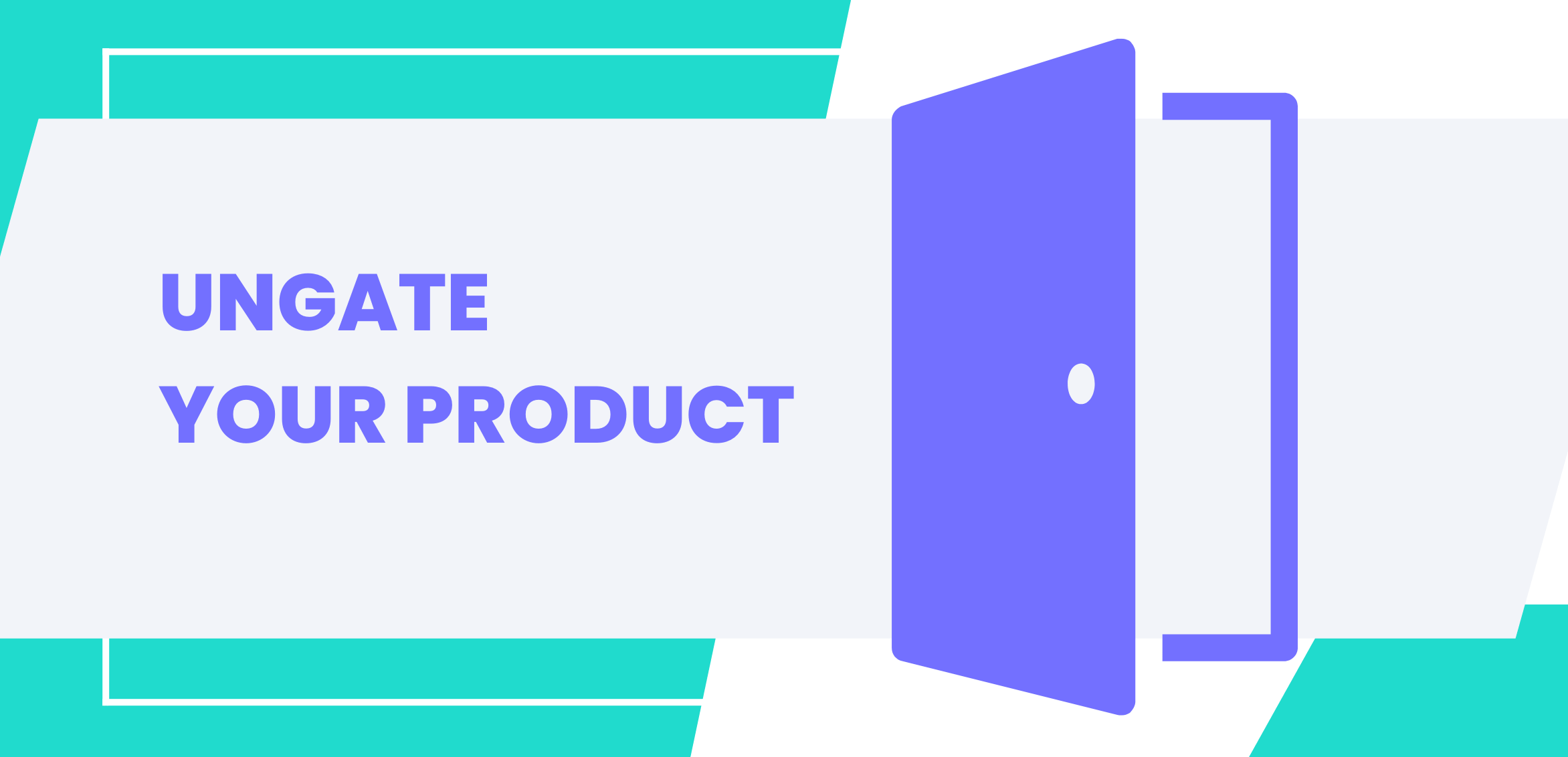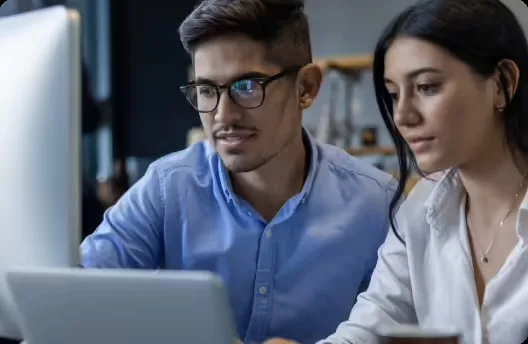Accelerate deals and increase win rates with the leading enterprise AI demo platform.
When Should You Ungate Content and Product Experiences?

April 22, 2025
Table of Contents
You’re happily scrolling through some SaaS company’s website, looking at a product you think might help you with your work. And there’s a very tempting free download or product tour on the website. “Great,” you think, “I can get a taste of what this product is like with just a few clicks.”
And then… the dreaded pop-up appears.
“Want to see what we offer/what our product looks like/what this case study says? It’s free—just give us your email address!
It’s not the effort of typing in your email address that makes you groan. (Let’s be real, you have autofill set up anyways.)
It’s the knowledge that this one simple act will lead to an inbox full of sales emails for the next year or more for a product you don’t even know if you want, insistent Linkedin messages, or even (ugh) a cold call.
And so that free taste isn’t so free—it comes with a lot of irritation and incoming bids for their attention. That tiny bit of friction makes many of your website visitors stop dead in their tracks and abandon their buyer’s journey right there.
If you want to explore a more buyer-friendly way of selling your product, consider adding more ungated product experiences in 2023. They’ll help you:
- Provide value upfront for potential buyers
- Allow them to direct their own buying journey
- Get your sales team more qualified leads
- Remove the friction from your product experiences.
(Want the TL;DR with some creative vocals? Watch the “Ungate Yourself” music video by the incredible Jorge Soto!)
Here’s everything you need to know about why you should ungate your product and how to do it effectively.
Gates Get in the Prospect’s Way
Consider that website you bought a novelty t-shirt from as a gift for your brother-in-law in 2018. It was definitely a one-time purchase (you’re just not a novelty t-shirt person), but the company forced you to create an account just to make a purchase, and they still send you regular marketing emails.
The added friction in the buying process almost made you abandon the purchase (except your brother-in-law loves these shirts), and you’re not more likely to make an additional purchase later because you send all those emails to your spam folder.
“Sure,” you say, “but I do make purchases again from other brands that email me—email marketing works!” Yep, it absolutely does, with an important caveat—when the prospect willingly signs up for your email list.
There’s the occasional exception to that rule, but is that handful of sales worth annoying and potentially losing dozens of great customers who couldn’t get the info they needed without giving up a piece of their inbox? We’re all already drowning in emails, and we don’t tend to have a strong affinity for the brands who make that problem worse against our will.
For a one-off e-commerce purchase, maybe this strategy works just fine. But SaaS businesses are built on customer relationships and retention. And with an increased focus on profitability over growth in these uncertain economic times, we’ve gotta think of a better way to get qualified leads and close business as an industry.
The gate is going out of style—you heard it here first.
Why Marketers Gate Their SaaS Products
Of course, those product or content gates don’t exist only to annoy prospects. Gates came into being because it was solving a previously huge problem. Marketers put up those gates to get leads and have some sort of attribution for the content they produce. (Trust me, I’m a marketer, and I understand exactly how challenging the attribution piece is!)
The gate isn’t a perfect system, but it exists for a clear reason—you want to get those email addresses from leads so your sales team can contact them, walk them through the sales process, and close the deal.
But it’s not 2012 anymore—that’s not how today’s buyers want to buy SaaS. There’s no singular buyer’s journey, and most buyers want to explore on their own and only interact with sales once they’ve made a purchase decision or at least conducted a lot of their own research.
60% of buyers visit a company’s website before accepting an in-person or remote sales meeting. If they’re landing on your website only to find barriers to getting the information and experience they need to move forward, that’s not a great way to start off your relationship with a customer.
You must give users value right from the start to make your product-led motion a success. After all, that’s what PLG is—giving customers value up front and finding ways to monetize a certain portion of those people and organizations later.
Why Companies Ungate Their Products
1. It Lets Buyers Direct Their Own Journey
Sales and marketers often struggle with the rise of PLG because doing it successfully means giving up some measure of control to your customers and users. You no longer hold all the information, with a big pool of prospects willing to go along with your playbook to get access to your products.
SaaS customers are increasingly unwilling to play that game, and they’re the ones in control these days. You can fight it, but it’s clear the world isn’t going back to the old way—or you can get out in front of it and win more market share because you’re providing the experience buyers love.
Forward-thinking SaaS companies use their product as a go-to-market asset throughout the buyer’s journey — not just a solution that solves customers’ problems. They’re making their products more user-friendly and accessible for prospects to self-serve and self-educate, even for early-stage adopters who aren’t yet customers. Gating the content out there to sell your product is counter to that effort.
Why would you want to make it harder for prospects to explore what you’ve spent so much time, thought, and effort to create? Is getting an email address enough of a trade-off to balance out that negative experience and greater site abandonment?
Gathering email addresses is helpful to your marketing and sales efforts. I’m not arguing otherwise. But is gating your content the right way to get them? Or is it just how you’ve always done it without exploring other options?
And much of the buyer information you get from those pop-up forms can be found elsewhere—we’re all collecting a ton of information on our website visitors these days. Ungating might mean you need to get a little more creative to access that info, but the trade-off in an improved buyer experience is well worth it. And since more than 70% of businesses say they will happily consider other vendors if their core “must haves” are not met during their buying journey, or if the experience is poor, you must keep the buyer experience at the forefront.
2. It Can Produce Better-Quality Leads
A confession here: many times as I’m doing research while writing posts, I have to fill in my contact info to access info on some SaaS website or other. And my info gets passed to a hapless sales rep who pings me multiple times with no response, or an overeager email nurture campaign, when I’m not even a prospect at all—just doing my research over here, thanks!
But that’s a real problem when you use a gate. Sure, you’re getting information on potential leads, but are most of those high-quality, or are they just tire-kickers and content marketers?
A new user ≠ a good user.
In fact, OpenView has found that while ungating product experiences do lead to a decline in the number of signups your product will get, you’ll also get a significantly higher number of activated accounts. The users who signed up have already seen value and are much more likely to be active and paid customers.
Plus, ungated product experiences mean more people will get to experience your product. Every website visitor will now have access to your product via a guided demo or tour, instead of only those willing to hand over their email address.
More people seeing how your product provides value will motivate more of them to take action (like signing up for a free trial) instead of just lurking and leaving. And you’re allowing prospects to qualify or disqualify themselves, making sales calls more efficient.
3. It gives your buyers what they want: product experiences
In many ways, the SaaS industry hasn’t moved on from the old view of the sales playbook where prospects have to Give To Get: they give you information to access your products.
Buyers don’t want to buy like that anymore. The new Give To Get flips this playbook on its head: you give prospects a great experience with your product, and your company will get them as customers.
If you’re gating some portion of access to your product in the early stages when buyers are doing their independent research, especially access to the product itself, you’re cutting off a potential source of success.
How to Ungate Your Product Effectively
So how can you eliminate the gates (or reduce them significantly) without sacrificing your best source of leads? We’ve got ideas.
You can still collect email addresses from prospects, but first, let them explore more of your product or content without that friction point. Prospects who are genuinely interested will happily give you info at some point so they can continue the buying journey. And if your content is more on the ungated side, they’ll have done plenty of self-educating already, which accelerates the sales cycle.
Choose your gates selectively
Our customer Pendo also does an awesome job with a hybrid ungated solution. They don’t gate the first tour you take, letting you jump right in. But at the end of the first tour, it offers you the option to continue the tour or get a demo. If you continue, you need to put in your info.
The hybrid solution lets users get their first look at the product without friction but collects information on their most qualified leads (anyone who wants to take another tour). They’ve provided value upfront before they ask for prospect information.
Use interactive product tours without gates
Another way to consider reducing the gates in your buyer’s journey is using ungated interactive product tours. You can add these interactive self-guided tours to your website add them to your website (without requiring visitors to enter an email address or create an account, of course!) so your site visitors can explore and interact with your product in depth without friction.
Then, hit them with the option to sign up for your PLG motion—like a free trial or a freemium plan. You still get the email and account info you need, but your prospects who give that to you have given it because they’ve already seen the value in your product with those ungated tours and experiences.
You’re not trying to convert them from scratch—they’re already engaged because they got a product deep-dive and loved it. Think of it as an extra onboarding step to set up your prospects for success.
Ungated Interactive Tours on G2 and TrustRadius
Thanks to review sites adding new interactive demo features, we’ve started seeing more companies use ungated tours on their TrustRadius and G2 pages. Reprise customers like Unbabel and Conquer are some companies leading the charge.
Embedding an ungated tour on review sites is a great way to let prospective buyers experience your product beyond just your website. According to G2’s 2022 Buyer Behavior Report, 85% of buyers use third-party review sites to help influence their purchase decisions. Therefore, it only makes sense to put your best-selling asset (your product) in more places your buyers hang out.
And based on the data we’ve seen thus far, engagement on interactive demos is typically 2-3x higher than on more traditional forms of media like video and print content.
Test and learn by selectively ungating
If you have a lot of gated content like blog posts and white papers, you can also experiment with ungating only some of it to start. Test what ungating content related to one use case does and measure it against another gated use case—are you seeing a difference in user growth and lead quality?
Try it out and see what’s working for you. PLG is all about experimentation because it’s so individual to each company—there’s no one right way to do it.
Looking for a way to create beautiful, interactive product tours for your website and beyond? Reprise is here to help. And we walk the ungated content talk: explore our platform with our guided tours, no email address or log-in required!






